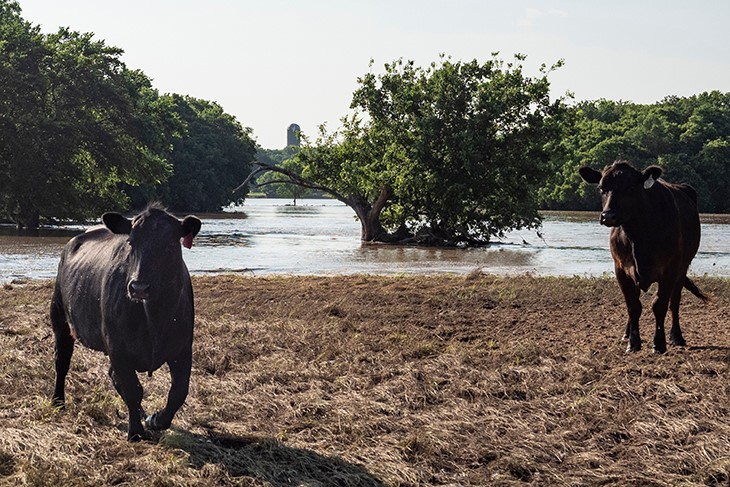Examine cattle for signs of foot rot
Foot rot arises when bacteria gain entry into the tissues of the foot through a break in the skin; cattle standing in damp or flooded areas can worsen problem.
June 11, 2019

The excessive amounts of rainfall that have inundated parts of the Midwest over the past few weeks is a warning sign for cattle producers to keep an eye out for lameness in their animals, according to an expert at Oklahoma State University.
“Lameness is the first sign of foot rot, an acute and highly infectious disease,” said Dr. Barry Whitworth, Oklahoma State University Cooperative Extension veterinarian and food animal quality and health specialist. “This extremely painful condition can become chronic if treatment is not provided, allowing other foot structures to become negatively affected. This may result in permanent problems and shorten an animal’s life, so examine and treat livestock promptly.”
Foot rot is caused by Fusobacterium necrophorum subspecies necrophorum, Whitworth said, noting that other bacteria are involved such as Porphyromonas levii, Prevotella intermedia, Staphylococcus aureus, Escherichia coli and Trueperella pyogenes. The problem arises when the bacteria gain entry into the tissues of the foot through a break in the skin.
“The damage to the skin may be from puncture wounds or abrasions or continuous exposure to wet conditions — such as what we are currently seeing in parts of Oklahoma — which softens the skin,” Whitworth said. “Once the bacteria gain entry into tissues, they multiply and release toxins that damage tissue.”
Diagnosis of foot rot begins with a thorough examination of the foot. Foot rot lesions usually infect both claws, so if only one claw is infected, the problem is likely not foot rot, he noted.
“Look for signs of swelling between toes and for redness or necrotic tissue,” Whitworth said. “Look for separation of the skin at the hoof wall. Most cases of foot rot will have a foul-smelling odor, and the foot may feel warm to the touch.”
The warmth distinguishes foot rot from fescue foot, which is cold to the touch, Whitworth explained. In addition, infected cattle may exhibit a fever, refuse to eat or show a reluctance to bear weight on the infected foot because of the pain.
When treated early, Whitworth said most cases respond well. Treatment begins with cleaning the foot and removing as much necrotic tissue as possible before applying a topical medication. Most cases do not require bandaging.
“Be aware that administering an antibiotic will be necessary,” Whitworth said. “Producers should consult with their veterinarian to determine what product works best in their area. Pain management also may be necessary. If deeper structures of the foot are damaged, the veterinarian may need to perform more aggressive therapy such as surgical intervention to salvage the animal.”
Cattle producers also need to be aware there is a very aggressive form of foot rot with a fast onset, extreme necrosis and erosion of the interdigital space. The condition is sometimes referred to as “super foot rot.” This condition is resistant to regular treatments. “Super foot rot” is thought to be caused by a resistant strain of Fusobacterium.
“Preventing cattle from standing in wet manure-infested areas will help detour foot rot,” Whitworth said. “Cattle that have foot rot should always be isolated until healed.”
In the past, the use of ethylenediamine dihydriodide — commonly referred to as EDDI — was used to prevent foot rot. However, use of this product is restricted under the U.S. Food & Drug Compliance Policy Guide. If cattle are deficient in zinc, the addition of a mineral mix with zinc may aid in prevention of foot rot, Whitworth said.
“Footbaths work well in confinement operations but are not practical in range conditions,” Whitworth said. “There is a foot rot vaccine available with a label claim to aid in preventing disease. Again, producers should consult their local veterinarian to determine the best options available to safeguard their herd.”
Source: Oklahoma State University, which is solely responsible for the information provided and is wholly owned by the source. Informa Business Media and all its subsidiaries are not responsible for any of the content contained in this information asset.
You May Also Like



